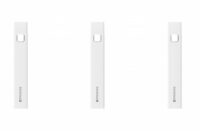Today, many wisely choose to use a filtering system in their homes as a way of fending off potential risks that might affect their water supply.
A popular choice is to have a pitcher filter. They have become very popular given their aesthetic appeal, ease of use, and perceived safety. The companies selling them now design futuristic-looking pitchers that allow the user to watch the water being filtered down. Many people think that the more advanced a pitcher filter looks, the more effective it will be.
These filters do a good job at improving your water odor and taste and taking care of small contaminants, thus giving the illusion of providing a healthier option. However, they are not capable of removing other more pernicious components that can result in elevated health risks for your family.
One other perceived advantage is that pitcher filters represent a minuscule investment when compared to the initial cost of having an RO system. You usually have to acquire a pitcher, which is not cheap, and then replace the small disposable filter every 6 weeks or so. It sounds attractive but, as we will see below, the whole business model functions as a pricey long-term subscription plan that ends up costing a lot more than an under-sink reverse osmosis system.
Benefits of Reverse Osmosis Systems
Reverse Osmosis filters are more expensive than the pitcher filter, but they do not simply distinguish between large and small contaminants. They can remove most of the chemicals and particles that might be in your home water supply, including arsenic, nitrates, sulfates, chromium 6 (which is carcinogenic), chlorine (which makes up most of the toxic content in your water supply), and more. They are capable of doing this while still maintaining the water’s taste, odor, and appearance.
It is worth mentioning that some reverse osmosis pitcher filters have TDS sensors that can tell you when to replace your filter cartridge or when you need to change out your pre-filter, eliminating most of the guesswork involved in pitcher filters.
If you take installation costs into account, RO systems are more expensive than pitchers if we only take into account the first year. However, since you only have to replace your Everpure H54 cartridge every 12 months or so, costs drastically go down after the second year, and continue to go down the more you use them. For example, Everpure H54 cartridges today cost a lot less than a few years ago, while pitcher filters have retained their market price. Moreover, over the course of a year, you might end up buying (and disposing of) 8-10 pitcher filters, making both costs and carbon footprint values go up.
In conclusion, reverse osmosis systems equipped with Everpure H54 cartridges provide a more powerful filtration system that offers a lot more uses than plain drinking water. These commercial-grade, under-sink reverse osmosis systems allow you to wash your fruits and vegetables and cook with water that is free from harmful contaminants. Even washing your dishes becomes a lot less irritating for your hands.
Of course, not every reverse osmosis filter offers the same quality. You might want to take into account the number of stages your system has (meaning how many layers of filtration are there), as well as their effectiveness. Some reverse osmosis systems provide a water softening alternative as well, making it even more efficient.
In the end, despite having a larger initial investment, an under-sink reverse osmosis system will deliver better results and save you money in the long run. In addition to this, installing one of those only takes about 20 minutes and will provide you with decades of high-quality and safe water.
If you want to know more about high-quality water purification systems, visit efilters.net. They offer incredible options for every need and provide a ton of data-based water purification solutions.












